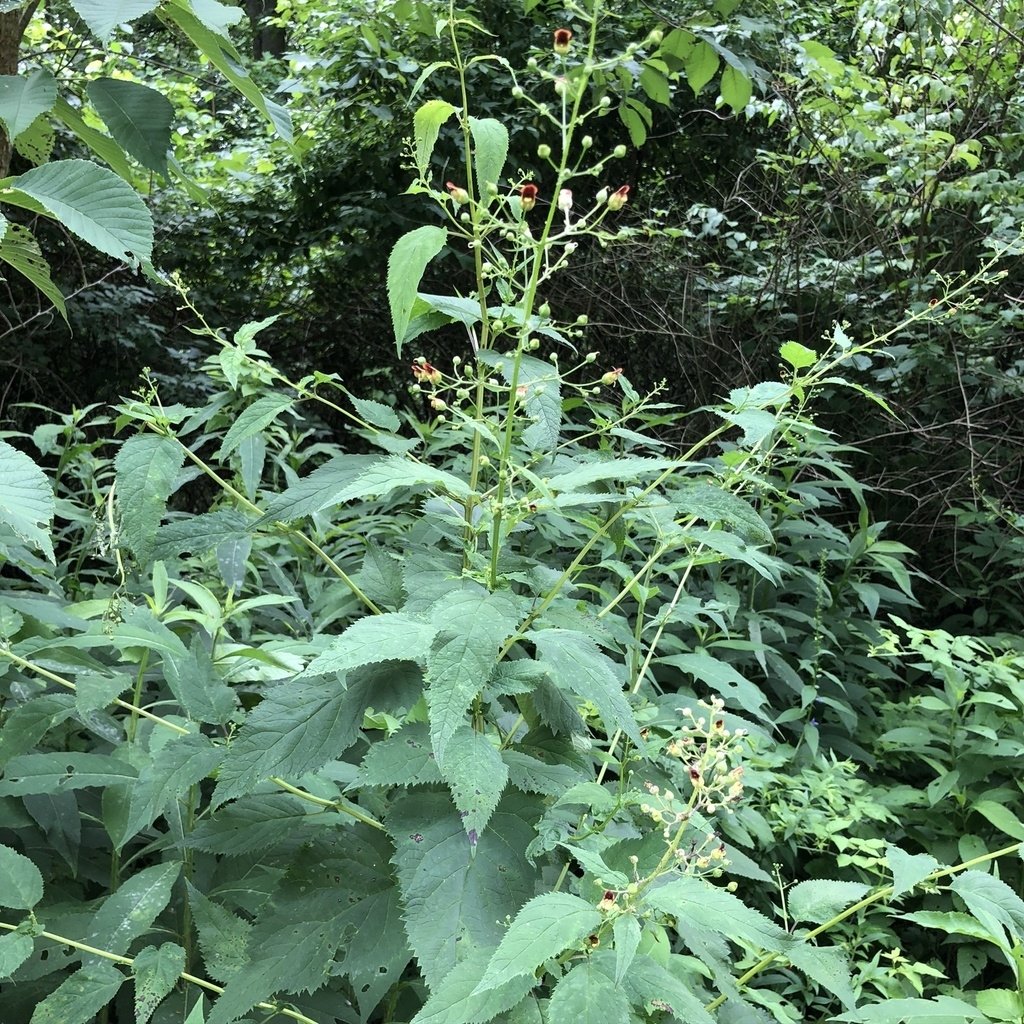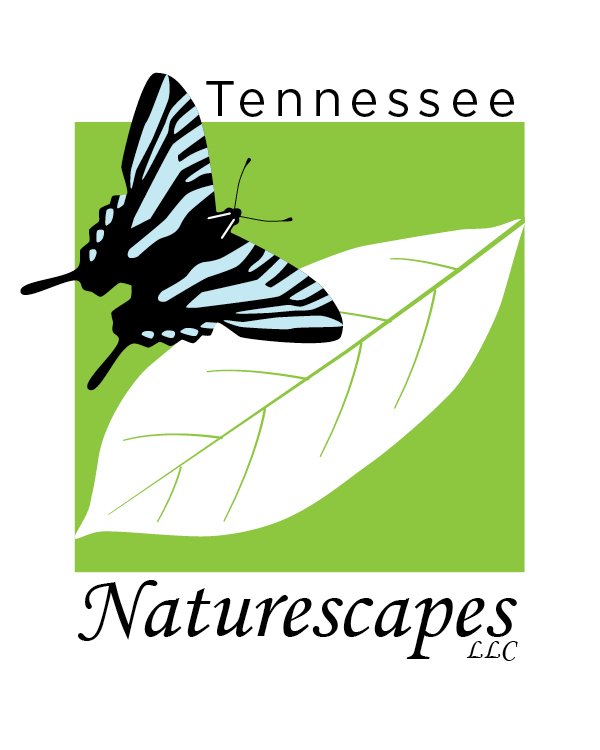 Image 1 of 3
Image 1 of 3

 Image 2 of 3
Image 2 of 3

 Image 3 of 3
Image 3 of 3




Scrophularia marilandica (Late Figwort)~Coming Soon
GARDEN SITE: ☀️-⛅ Moist, occasionally dry, fertile, well-drained soil.
SIZE: 4-10 ft. SPREAD: 3-6 ft.
FLOWERS: Nectar rich, urn shaped, burgundy and green. July-September.
WILDLIFE: Attracts bees, butterflies, wasps and hummingbirds.
LARVAL HOST TO: Baltimore Checkerspot, Fulvia Checkerspot, Gillettes Checkerspot, Chalcedon Checkerspot, Arachne Checkerspot, Dotted Checkerspot
ZONE: 4-8
DISTRIBUTION: AL, AR, CT, DC, DE, FL, GA, IA, IL, IN, KS, KY, LA, MA, MD, ME, MI, MN, MO, MS, NC, NE, NH, NJ, NY, OH, OK, PA, RI, SC, SD, TN, TX, VA, VT, WI, WV
One of the best nectar species for attracting bees, butterflies, wasps and hummingbirds! Late Figwort produces such an abundance of nectar that it was rated by the Xerces Society as having “Special Value to Native Bees: recognized by pollination ecologist as attracting a large number of native bees.” and “Supports Conservation Biological Control: A plant that attracts predatory or parasitoid insects that prey upon pest insects.” While at first glance the small flowers may not catch your eye, the number of insect species and hummingbirds that the blooms attract will provide endless hours of viewing pleasure. This unique plant is very uncommon in the nursery trade but is extremely valuable in our native habitats and make a perfect addition to a partly shady, moist pollinator garden. Resistant to rabbit and deer browse.
GARDEN SITE: ☀️-⛅ Moist, occasionally dry, fertile, well-drained soil.
SIZE: 4-10 ft. SPREAD: 3-6 ft.
FLOWERS: Nectar rich, urn shaped, burgundy and green. July-September.
WILDLIFE: Attracts bees, butterflies, wasps and hummingbirds.
LARVAL HOST TO: Baltimore Checkerspot, Fulvia Checkerspot, Gillettes Checkerspot, Chalcedon Checkerspot, Arachne Checkerspot, Dotted Checkerspot
ZONE: 4-8
DISTRIBUTION: AL, AR, CT, DC, DE, FL, GA, IA, IL, IN, KS, KY, LA, MA, MD, ME, MI, MN, MO, MS, NC, NE, NH, NJ, NY, OH, OK, PA, RI, SC, SD, TN, TX, VA, VT, WI, WV
One of the best nectar species for attracting bees, butterflies, wasps and hummingbirds! Late Figwort produces such an abundance of nectar that it was rated by the Xerces Society as having “Special Value to Native Bees: recognized by pollination ecologist as attracting a large number of native bees.” and “Supports Conservation Biological Control: A plant that attracts predatory or parasitoid insects that prey upon pest insects.” While at first glance the small flowers may not catch your eye, the number of insect species and hummingbirds that the blooms attract will provide endless hours of viewing pleasure. This unique plant is very uncommon in the nursery trade but is extremely valuable in our native habitats and make a perfect addition to a partly shady, moist pollinator garden. Resistant to rabbit and deer browse.
GARDEN SITE: ☀️-⛅ Moist, occasionally dry, fertile, well-drained soil.
SIZE: 4-10 ft. SPREAD: 3-6 ft.
FLOWERS: Nectar rich, urn shaped, burgundy and green. July-September.
WILDLIFE: Attracts bees, butterflies, wasps and hummingbirds.
LARVAL HOST TO: Baltimore Checkerspot, Fulvia Checkerspot, Gillettes Checkerspot, Chalcedon Checkerspot, Arachne Checkerspot, Dotted Checkerspot
ZONE: 4-8
DISTRIBUTION: AL, AR, CT, DC, DE, FL, GA, IA, IL, IN, KS, KY, LA, MA, MD, ME, MI, MN, MO, MS, NC, NE, NH, NJ, NY, OH, OK, PA, RI, SC, SD, TN, TX, VA, VT, WI, WV
One of the best nectar species for attracting bees, butterflies, wasps and hummingbirds! Late Figwort produces such an abundance of nectar that it was rated by the Xerces Society as having “Special Value to Native Bees: recognized by pollination ecologist as attracting a large number of native bees.” and “Supports Conservation Biological Control: A plant that attracts predatory or parasitoid insects that prey upon pest insects.” While at first glance the small flowers may not catch your eye, the number of insect species and hummingbirds that the blooms attract will provide endless hours of viewing pleasure. This unique plant is very uncommon in the nursery trade but is extremely valuable in our native habitats and make a perfect addition to a partly shady, moist pollinator garden. Resistant to rabbit and deer browse.

